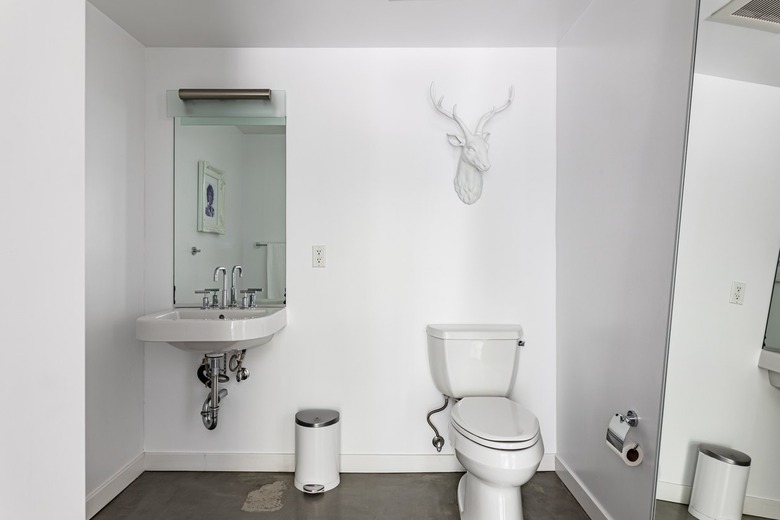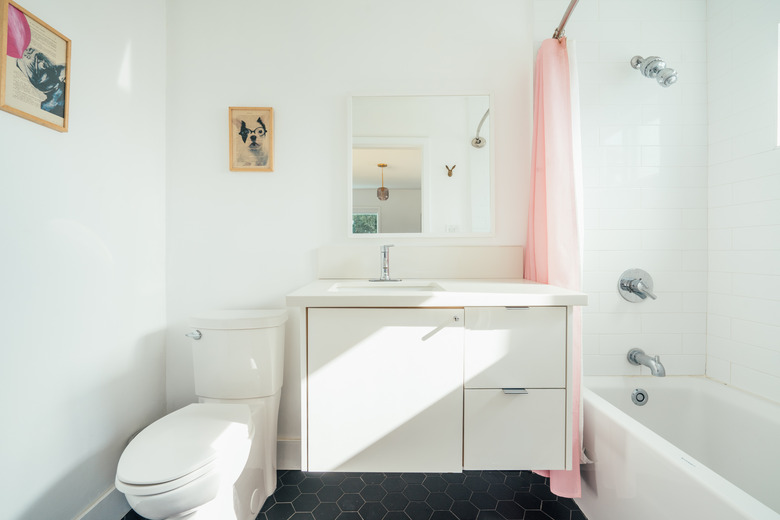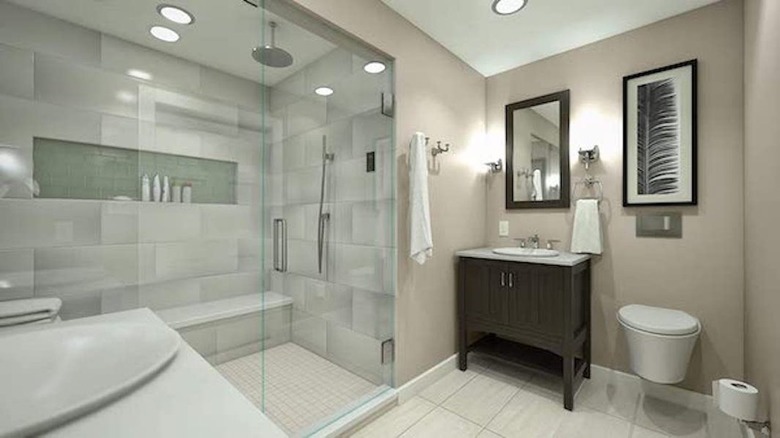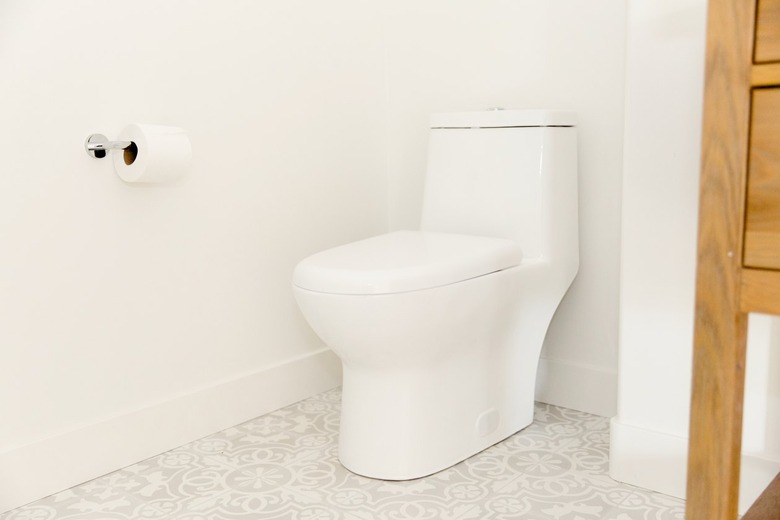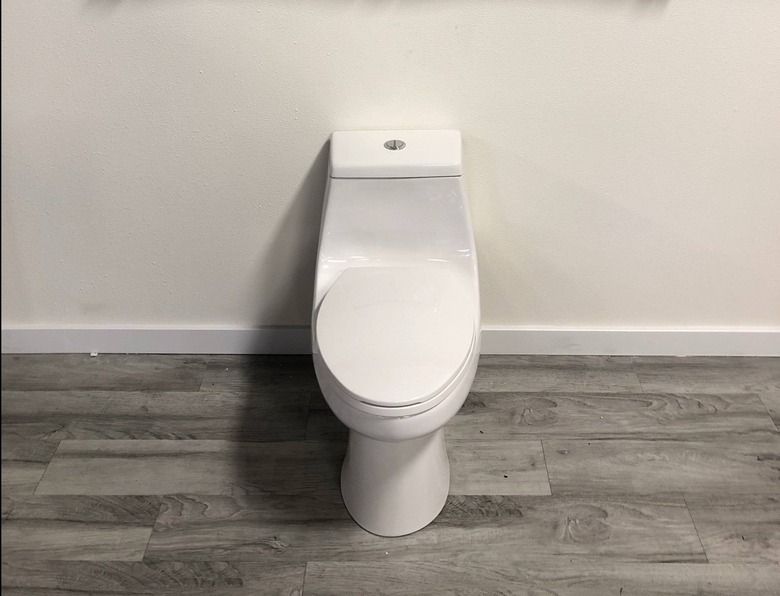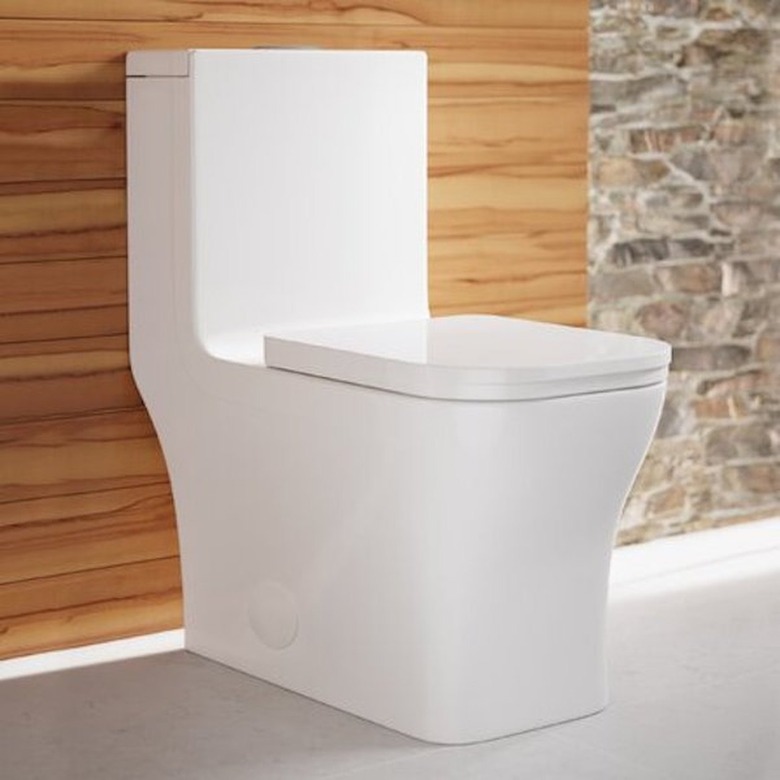How To Choose A Toilet
Is your porcelain throne feeling a little dated or not working quite right? Whether it leaks, doesn't flush, gets clogged frequently, or simply needs an update to match the rest of your bathroom, replacing your old toilet with a new one comes with a surprising number of decisions. Sizing is an important factor to ensure you can install the toilet properly, but other features and functionality also help you choose the best toilet for your bathroom.
Types of Toilets
Types of Toilets
When you head to the toilet aisle at your favorite home improvement store, you'll never believe how many types of toilets you have to choose from. Though it's usually easiest to replace your existing toilet with the same type since the installation is the same, you might want to switch it up if a different one is better suited to your bathroom situation.
Standard Toilet Models
In home bathrooms, most people are used to seeing standard toilets. These toilets have wide bases that sit directly on the floor. The toilet installation involves bolting the toilet to the floor over the rough-in to connect it to the plumbing system. A standard toilet takes up the largest footprint, but it's relatively easy to install when the plumbing is already in place.
Wall-Hung Toilet Models
Less common in homes are wall-hung toilets. The tank hides in the wall, and the bowl attaches to the wall, giving these toilets a sleek look with a smaller profile. If you don't already have a wall-hung toilet, this option can require significant plumbing changes to move the tank into the wall and the drain from the floor to the wall. The tank and wall-mounted bowl are often sold separately, so ensure you purchase all necessary parts.
Compared to standard floor-mount toilets, a wall-hung toilet can let you reclaim up to 12 inches of floor space, which can be a huge help in a tiny bathroom. You can also clean up the gross bathroom floor gunk much easier when you don't have crevices around the toilet base with which to contend.
One-Piece vs. Two-Piece Toilets
Another variation is one-piece versus two-piece toilets. There's a good chance you have a two-piece toilet in your home since it's the most common type for residential bathrooms. This type features a separate bowl and tank. When installed, the tank gets bolted to the bowl, so it creates a single unit, but you can separate the parts into two pieces. This type of toilet is usually the most affordable.
One-piece toilets are formed into a single unit with an integrated tank and bowl that you can't separate. They work the same way as a two-piece toilet, but they often have a lower, more streamlined profile. An advantage to a one-piece toilet is eliminating seams, which makes cleaning the toilet a little less disgusting.
Toilet Sizing Considerations
Toilet Sizing Considerations
Sizing is important to ensure you have enough space for the toilet you purchase. The most important measurement for a standard floor-mounted toilet is the rough-in measurement. This is the distance from the wall, not the baseboard, to the center of the drain that connects the toilet to your plumbing system.
To take this measurement, use a tape measure to get the distance from the wall to the center of the drain pipe, which is marked by the bolts that hold the toilet in place. (Note: They might be hidden under covers that match the toilet color.) This measurement is usually 12 inches, but toilets can also have 10-inch or 14-inch rough-ins. Your new toilet needs to match the rough-in measurement to fit correctly.
Consider the width and depth of the toilet as well. If the toilet sits between two structures, such as a wall, vanity, or bathtub, you need enough clearance to fit the new toilet into the available space. In larger bathrooms where the toilet isn't close to other structures, the size isn't as important.
Toilet Height Considerations
Toilet Height Considerations
The height of the toilet doesn't usually affect whether or not it fits into your bathroom, but it does affect how easy the toilet is to use, especially for anyone who has mobility issues or disabilities. Standard-height toilets, which have seats that are about 15 inches off the floor, can be difficult to use in those situations.
Having an accessible toilet that's taller than normal with more space around it is safer and easier to use for some people. You might also prefer a higher toilet if you're a tall person. Taller toilet bowls typically measure 16 to 19 inches high, which is roughly the height of a chair, and they meet Americans with Disabilities Act requirements for accessibility.
Toilet Bowl Shape
Toilet Bowl Shape
The shape of your new toilet bowl affects the comfort of using it and the space it requires. Round bowls take up the least amount of space, making them perfect for any small bathroom. You might need a round bowl if your toilet is near a door or cabinets, as the smaller profile can give you more space to open doors or drawers.
Elongated toilet bowls are often more comfortable to use and fit most home bathrooms, although they take up more space, usually about 2 inches more than a round toilet bowl. You can also get a compact elongated bowl that's about 10 percent smaller than a standard elongated bowl.
Toilet Flush Types
Toilet Flush Types
A major part of how a toilet works is the flushing method. Even though most toilets look similar, that doesn't mean they perform the same. You want a strong, reliable flush every time, but you might also want to minimize water waste. Comparing the flushing system types helps you find a toilet that matches your needs and priorities.
Single-Flush Toilet Types
Single-flush toilets have a single flushing mechanism that releases the same amount of water for every flush. The amount of water released varies by model. You'll find a wide range of styles and types of toilets that use single-flush mechanisms.
Dual-Flush Toilet Types
Dual-flush toilets have two flushing options. One is a full flush, and the other is a lighter flush, which can drop the water usage to as low as 0.6 gallons compared to as much as 1.6 gallons for the full flush. This improves water efficiency, letting you conserve water when there's only liquid waste to flush.
Pressure-Assisted Toilet Types
Traditional toilets use a gravity-assisted flush method. A pressure-assisted toilet is an alternative that uses pressurized air to help the water move through the bowl. This can cut down on clogs, but these toilets are often on the high end of the price range and can be loud when they flush.
Toilet Flushing Performance
Toilet Flushing Performance
Regardless of what type of flush mechanism you choose, you want a toilet with consistent flushing performance that gets everything down in a single flush. Good flush performance helps prevent clogs, so you don't have to reach for the plunger every time you flush the toilet.
Before choosing a toilet, look at toilet flush ratings for the models you're considering. Maximum Performance, or MaP, testing is a widely accepted way to judge how well a toilet flushes. Using toilet paper and soybean paste, this test scores each toilet by the mass of waste measured in grams that it can successfully flush.
Consumer Reports also does extensive testing on toilets to rate them based on various performance factors. In addition to waste removal capability, it also tests the cleanliness of the bowl after flushing as well as drain line clogging. These ratings help you choose a toilet that consistently performs to high standards.
Water Usage Comparison
Water Usage Comparison
The toilet you choose can affect how much water you conserve with regular use. Federal standards require toilets to use 1.6 gallons of water or less per flush to help with water conservation, but you can find toilets that use less water without sacrificing how well they flush. Toilets with the WaterSense label are water-saving models that can help you cut your toilet's water consumption by 20 to 60 percent over standard models.
Style and Appearance
Style and Appearance
A new toilet might not be the most exciting part of a bathroom remodel, but the style of toilet you choose affects the overall bathroom aesthetics. You can find traditional-style toilets and modern styles with sleek, clean lines or geometric design elements. Transitional-style toilets meet in the middle with more updated lines than traditional toilets, without being too modern
The design of the trapway is another aesthetic factor. Traditional toilets have visible traps, which you can see as a curving structure at the back of the toilet. Concealed trap toilets cover up the trapway with a smoother design, giving a more sleek, modern aesthetic. Another contemporary option is a skirted toilet, which not only hides the trap but also covers the traditional rounded bowl look, creating more of an angular look that tapers slightly from the bowl to the floor.
White is a popular color that blends in with the bathroom and keeps the toilet looking cleaner. You can find toilets in other colors, including almond or off-white for something neutral but not quite so bright, but anything other than white can hurt the resale value of the home. Even though a new toilet is a relatively inexpensive upgrade, a bold color can make it stand out and may turn off potential buyers.
Advanced Toilet Features
Advanced Toilet Features
Some toilets have advanced features to make your life a little easier. One example is a touchless flush mechanism. Instead of touching the same flusher that everyone else touches, you simply wave your hand over the sensor. The hands-free option is perfect for people with limited mobility or hand grip issues who have difficulty grasping a flusher, but it can also come in handy for germaphobes.
Self-cleaning toilets might sound like a futuristic invention that only the Jetsons get to enjoy, but they're available on the market now, and they can cut down on the fights over who has to scrub the toilet. Varying technology, including special coatings, water pressure, and specially designed bowls, make it possible to press a button to clean the toilet automatically. Expect to pay more for this luxury toilet feature.
Even if you stick to a traditional toilet that you have to scrub yourself, you can make the job easier with advanced finishes. Many modern toilets have ultra-smooth finishes that are much easier to clean. Some also have anti-bacterial glazing for less staining and fewer odors in the toilet.
Toilet Seat Options
Toilet Seat Options
Toilet seats can be a separate purchase from the toilet itself. When choosing your toilet seat, make sure it matches the profile of the toilet bowl, either elongated or round. Seats are available in a range of materials, including plastic, polypropylene, real wood, and composite wood. You can also get cushioned toilet seats.
Advanced toilet seats come with extra features that make the bathroom experience a little nicer. Soft-close toilet seats close slowly so you don't have to worry about loud slamming. Heated toilet seats keep you comfortable and warm on chilly days, and some seats even deodorize your toilet to, ya know, keep things fresh.
